Porcelain(tur. farfur, fagfur, from pers. fegfur) - a type of ceramics, impervious to water and gas. It is translucent in a thin layer. When lightly struck with a wooden stick, it produces a characteristic high-pitched clear sound. Depending on the shape and thickness of the product, the tone may be different.
Porcelain is usually obtained by high-temperature firing of a fine mixture of kaolin, quartz, feldspar and plastic clay (such porcelain is called feldspar).
He brings the merchants to the porcelain manufactory and buries them under the floor of the oven, roasted for three days, and washed after it is taken out, before it is finally put up for sale, ready for use. The picture shows only the collection of material: the processes of cooking and roasting are not shown.
Processing and purification of formulated blue hue 炼选青料
The blue material after it has been roasted must be specially selected, and there is a special class of workers whose duty it is to see to it. The top view is chosen for being dark green in color, with a rich translucent hue and a brilliant aspect. When the same dark green but wants a bit of richness and brilliance, it is used to decorate larger porcelain made for sale. The remainder, which has neither luster nor color, is selected and discarded.
Porcelain is distinguished by the composition of the mass (hard, soft, bone) and by the nature of the paintings (underglaze, overglaze). Expensive collection varieties of porcelain are named after the place of production or by the names of factory owners or inventors.
Types of porcelain
Having touched upon the theme of the variety of porcelain products, it is impossible not to talk about the various types of the material itself. Depending on the composition of the porcelain mass, soft or hard porcelain is obtained. soft porcelain differs from solid porcelain not in hardness, but in the fact that when firing soft porcelain, more liquid phase is formed than when firing hard porcelain, and therefore the risk of deformation of the workpiece during firing is higher.
There is also an intermediate type of porcelain called bone, as one of the types of soft porcelain.
hard porcelain It is distinguished by its strength, excellent resistance to high temperatures and acids. Transparency known to the whole world, combined with a bell sound, is a property of hard porcelain. This type of porcelain was called "Meissen" (after the name of a small town in Saxony, in eastern Germany, where almost three hundred years ago the chemist Johann Betger invented the new kind porcelain). Soft porcelain, developed in Florence two centuries earlier than hard porcelain, is called Medici porcelain. But today, more and more often you can hear the term "frit porcelain", implying a method of manufacture. Soft porcelain, which is mainly used for artistic products, is more transparent than hard porcelain, but its heat resistance is much lower. A compromise between soft and hard porcelain is bone china. The composition of bone china was discovered in England, and its production began there about 250 years ago. According to its properties, bone china occupies an intermediate position between hard and soft porcelain. Bone is not as white as hard, and is harder and harder than soft porcelain.
When the material is selected, it is ready to use. The method used is to paint it on the piece that has not been fired, then put the piece in with the icing, and then fire it in the kiln, from which it comes out with a uniformity of color turned to brilliant blue. If it has not been embedded in the glaze, the color will be black. If the piece is overloaded, the blue dyed finish will "run" into the piece's white ground.
There is one kind of blue, commonly called bulbous shoots, that makes very well-defined strokes that do not change in the kiln, and this must be chosen for accurate painting. The picture shows baskets filled with boxes of color, with the usual background; there is no actual reference to color selection in it.
Story
Porcelain was first obtained in 620 in China. The method of its manufacture was kept secret for a long time, and only in 1708 the Saxon experimenters Tschirnhaus and Böttger managed to obtain European porcelain.
Attempts to declassify oriental china continued for almost two centuries in Italy, France and England. However, the result was materials that vaguely resembled porcelain and were closer to glass.
Embossing materials for bodywork 印坯乳料
After the large and small round pieces have been formed on the wheel and have been sufficiently air-dried, they are placed in the molds that have been previously prepared and pressed gently by hand until the paste is of regular shape and uniform thickness.
The piece is then taken out and dried in a shady place until it is ready to be molded with grinding knives. Wet paste should not be exposed to the sun as the heat will crack it open. As for the preparation of color for artists, it must be completely crushed in a mortar; if rough, spots of bad color will appear. Ten ounces of material is placed in each mortar and a special class of workers grinds it for a full month before it is put to use.
Johann Friedrich Böttger (1682-1719) began to experiment with porcelain, which in 1707/1708 led to the creation of "rothes Porcelain" (red porcelain) - fine ceramic, jasper porcelain.
However, real porcelain had yet to be created. Chemistry, as a science in its modern sense, did not yet exist. Neither in China or Japan, nor in Europe, raw materials for the production of ceramics could yet be determined in terms of chemical composition. The same was true for the technology used. The process of porcelain production is carefully documented in the travel notes of missionaries and merchants, but the technological processes used could not be deduced from these reports. Known, for example, are the notes of the Jesuit priest Francois Xavier d "Entrekol (English) Russian, containing the secret of Chinese porcelain production technology, made by him in 1712, but became known to the general public only in 1735.
The mortars used for grinding are placed on low benches, and on the sides of the bench are two vertical wooden posts with transverse pieces of wood that are pierced to hold the pestle handles. The men sitting on the benches grasp the pistils and hold them by rotation. Their monthly wages are only three-tenths of an ounce of silver. Some of them grind two mortars with both hands. Those who work until midnight get double their pay. Aging men and young children, as well as the lame and the sick, make a living from this work.
Understanding the basic principle behind the porcelain manufacturing process, namely the need to fire the mixture various kinds soils - those that fuse easily and those that fuse more difficultly - arose as a result of long systematic experiments based on experience and knowledge of geological, metallurgical and "alchemical-chemical" relationships. It is believed that the white porcelain experiments went hand in hand with the "rothes porcelain" because only two years later, in 1709 or 1710, the white porcelain was more or less ready to be made.
Blue and white paint work 圆器青花
Various types of blue-colored round utensils, each numbering in the hundreds of thousands. If the painted finish on each piece is not exactly the same, the set will be irregular and patchy. For this reason, people who draw outlines learn to draw, but do not draw; those who draw study only painting, not sketching; thus their hands acquire skill in their particular branch of labor, and their minds are not distracted. To ensure a certain uniformity in their work, the sketches and the artists, although not publicized, occupy the same house.
It should be noted that Chinese porcelain, from a modern point of view, is soft porcelain, since it contains significantly less kaolin than hard European porcelain, it is also fired at a lower temperature and is less durable.
Together with Bettger, experts and scientists of various specialties worked on the creation of hard European porcelain. European hard porcelain (pate dure) was a completely new product in the field of ceramics.
As for the other lines of work - embossing, engraving and carving in openwork - they are treated equally, and each of them is entrusted to his special workers. The separation of decoration in underglaze paint, although very distinct, is associated with painting.
As for the rings around the borders of the figures and the circumferential blue stripes, they are done by the workers who finish the pieces on the polishing wheel, while the signs on the tray below them and the written inscriptions are the work of the writers who attach the seals.
For painting flowers and birds, fish and aquatic plants, and living objects in general, the study of Nature is the first requirement; in the imitation of Ming Dynasty porcelain and ancient pieces, the sight of many patterns brings craftsmanship. The art of painting in blue color significantly different from the decoration in enamel color.
At the end of December 1707, a successful experimental firing of white porcelain was carried out. The first laboratory notes on porcelain mixtures suitable for use date back to January 15, 1708. On April 24, 1708, an order was given to establish a porcelain manufactory in Dresden. The first pieces of porcelain fired in July 1708 were unglazed. By March 1709, Böttger had solved this problem, but he did not present glazed porcelain samples to the king until 1710.
Various forms of vases and sacrificial vessels included in the general term cho ch'i include square, round, ribbed, and those with prominent corners. There are various styles of decoration, done with paints in colors and carvings in openwork.
In copies from antiquity, artistic models should follow; in the novelty of the invention there is a deep spring to paint. In the design of porcelain, the correct canons of art must be observed; the design should be taken from the patterns of old brocade and embroidery, flowers from the garden, which can be seen in the spring from the pavilion.
In 1710, at the Easter fair in Leipzig, marketable tableware made of "jasper porcelain" was presented, as well as samples of glazed and unglazed white porcelain.
In Russia, the secret of the production of hard porcelain was rediscovered by Lomonosov's associate D. I. Vinogradov in the late 1740s. The manufactory in St. Petersburg, where he worked, eventually turned into the Imperial Porcelain Factory, better known in the USSR under the abbreviation LFZ.
There is a huge number of Kuan, Ko, Yu, Tin and Chun copies under the copy; and water, fire, wood, metal and earth provide an inexhaustible fund of materials for new combinations of supernatural beauty. natural objects modeled, molded and dyed in appropriate colors; the materials of the potter's art are produced from forests, and the threads and decorative themes are supplied by the same natural sources.
Sacrificial vessels, tsuns and lei are of equal importance; censers, similar to ancient bronzes, yu and ting, emit flames of bright color. In addition to the ancient clay drums, many types of musical trumpets are now being produced, and the artistic skill of the colored brush is immortalized in ingenious porcelain pieces.
Chinese porcelain
Porcelain was invented in China in the 4th to 6th centuries. This discovery was facilitated by rich deposits of kaolin (Chinese clay). The surviving items are elongated vessels with a smooth polished surface, often with stucco decoration, of light colors. In the Tang (7th-10th centuries) and Song (10th-13th centuries), blue and pale green vases with relief ornaments were exported to the countries of Asia and Europe, which in Europe were called "celadon" (the main place of Longquan production). These vases and jugs were shaped like antique vessels, often with dragon-shaped handles and animal-shaped necks. Then came the milky-white "bei-ding" vessels from Dingzhou with an extruded pattern, the blue "zhu-yao" wares, and the "jin-yao" vessels decorated with glaze from the province of Henan. Starting from the 14th century in the Ming era (14th-17th centuries), Jingdezhen became the leading center for porcelain manufacture, where the production of products decorated with three-color lead glazes (sancai) or underglaze blue cobalt painting was established, which was often combined with overglaze painting (doucai) . During the Ming era, porcelain figurines became popular.
Glazing by blowing or touching 蘸釉吹釉
All varieties of round ware and vases, including blue-decorated pieces and copies of Kuan, Koh, and Yu china, must be glazed before being fired. The ancient method of applying glaze was to apply it to the surface of a vase, square, tall, grooved or ribbed, with a goat-brushed hairbrush filled with liquid glaze, but it was difficult to distribute it evenly in here.
Round wares, both large and small, and simple round vases and sacrificial vessels, all used to dip into a large jar that held the glaze, but they failed by being too thick or too thinly plated, and besides, so many were broken, making it difficult to make perfect specimens.
According to the predominance of colors in painting in Europe, Chinese porcelain began to be divided into families: pink, green, yellow, black. In these products, the refinement of forms, the purity of the surface attracted. Products from the so-called flaming porcelain with flambe glaze conquered with the colorful surface. In connection with the export of porcelain to the West, the themes of painting began to expand: subjects appeared on the items drawn from European engravings, custom-made heraldic figures.
Nowadays, small round pieces are still dipped in a large glaze jar, but vases, sacrificial vessels and large round pieces are soufflé glazed. A bamboo tube one inch in diameter and about seven inches long has one of its ends surrounded by fine gauze, which is repeatedly dipped into the icing and overflows from the other end. The number of repetitions of this process depends partly on the size of the piece, partly on the nature of the glaze, from three to four times to seventeen or eighteen.
These are two different glazing methods: immersion and insufflation. The size of the round piece has been fixed in the mold, but the smooth gloss of the surface depends on the polishing machine, the province of which is another branch of work, namely "turning". He uses in his work a polishing wheel, which is similar in shape to an ordinary potter's wheel, only it protrudes up the middle of a wooden mandrel, the size of which varies in proportion to the size of the porcelain to be turned. The top of this mandrel, which is rounded, is wrapped in raw silk to protect the inside of the piece from injury.
In the 18th century, the forms of products lose their exquisite simplicity and become more pretentious. The surface often imitates varnish, expensive bronze, gold, and other materials. In the future, Chinese porcelain experienced the decline and stagnation of art forms.
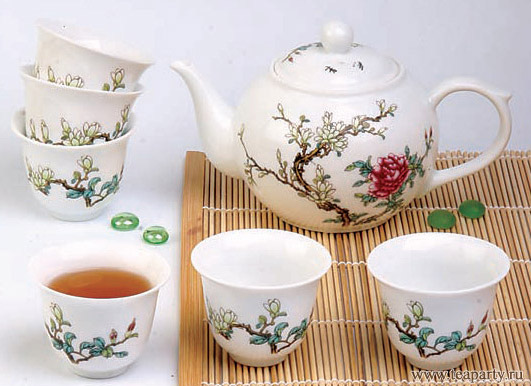
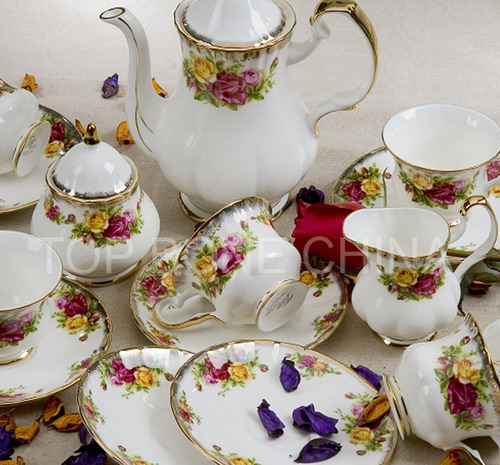

The piece to be turned is put on the rim, the wheel is turned around, and it is trimmed with a knife until the same smooth lacquer is inside and out. The coarser or finer finish of the mold depends on the lower or superior handwork of the polisher, whose work is therefore of great importance.
As for the next process, in order to dig out the foot, it is necessary because each piece, when first depicted on the potter's wheel, has a handle of paste left under the foot, two or three inches long, with which it is held while it is being painted. and glazed.
Porcelain of Korea and Japan
In Korea, porcelain has been known since the 10th century. Pure white dominates, as well as with cobalt underglaze painting. The discovery of a kaolin deposit in Japan in the early 17th century led to the emergence of the first Japanese porcelain manufactory in Arita, which began to produce blue and white porcelain, decorated with celadon, as well as products with black and brown glazes. Products in the Imari style (from the name of the port through which Japanese porcelain was exported to Europe) with the finest polychrome underglaze enamel painting on a white background and in the Kakiemon style (after the creator of a new type of decor) with original overglaze painting in the form of flowers, birds, butterflies. Western European products in the kakiemon style, created according to Japanese models and in great demand, are widely known.
Only after the glazing and paint of the scenery is finished is this handle removed by the polisher, who at the same time digs out the leg, after which the inscription is written underneath. In the picture, workers are visible in two processes of surface polishing and foot excavation.
The stove is long and round, similar in shape, with a tall water jar upside down on its side. It measures just over ten feet high and wide, about twice as deep. It is covered by a large, tiled building called the "stove shed". The pipe, which is tubular, rises to a height of more than twenty feet behind, outside the oven.
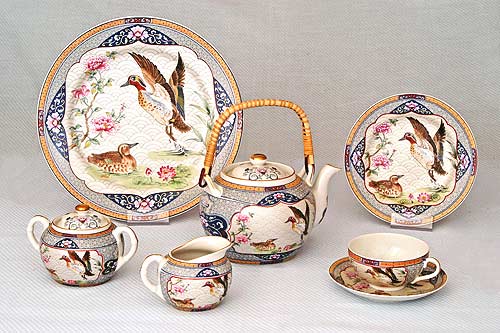
Porcelain in Germany
IN Western Europe in Florence, under the patronage of the Medici in the 16th century, soft porcelain was discovered with a light shard covered with lead glaze. Outwardly, it looked like Venetian milk glass and was signed with cobalt. A real revolution in the history of Western European porcelain production was the invention in 1709 by the German alchemist I. Betger, together with the physicist E. Chirnhaus, of hard porcelain. Soon a porcelain manufactory was founded in Saxony, which for fifty years had no equal (see Meissen porcelain). Meissen porcelain owes much of its fame to the remarkable artist Johann Heroldt, who created skillful products in the chinoiserie style and invented the decor of seemingly living flowers, called "German flowers", as well as to the outstanding sculptor Johann Kaendler, known for his fine plasticity in the Rococo style.
The porcelain, when finished, is packed in saggar and sent to the furnace people. When these people place it in the kiln, they arrange the saggars in piles, one above the other, in separate rows, to leave space between the rows for the flame to pass freely.
Fire stands out both in front, in the middle, and behind; the front of the fire is fierce, the middle is moderate, the back is weak. Different types of porcelain are placed in the kiln according to the hard or soft quality of the glaze with which they are coated. After the stove was fully charged, the fire ignited and the entrance was then filled up with bricks, leaving only a square hole through which straw is poured without interruption.
The secret of porcelain did not remain within the walls of Meissen for long. All over Europe they are working on declassification. The center of porcelain production is shifting to Vienna and Venice, where porcelain factories each with its own handwriting. In the second half of the 18th century, new ceramic factories appeared in Germany in Nymphenburg, where the famous Rococo master Franz Bustelli worked, in Hoechst, also known for works in the Rococo style by Johann Melchior, in Berlin, Ludwigsburg and other cities.
When the saggars inside the kiln have reached a silvery red color, the shooting stops and after another 24 hours the kiln is opened. The perfection of china depends on the dismissal, which, counting from the moment of entry into the process of exportation, usually takes three days. On the fourth day, early in the morning, the kiln is opened, but the saggars inside, containing porcelain, are still a dull red color, and it is still impossible to enter it.
After a while, the workers opening the oven kept their hands protected by gloves made of ten or more folds of cotton soaked in cold water, and with wet rags wrapped around their heads, shoulders and backs, could go to get the china out. After all the porcelain has been removed, and while the oven is still hot, a new load of crockery is placed in its place. In this way, new porcelain that is still wet dries more gradually and is less prone to being broken into pieces or cracked by fire.

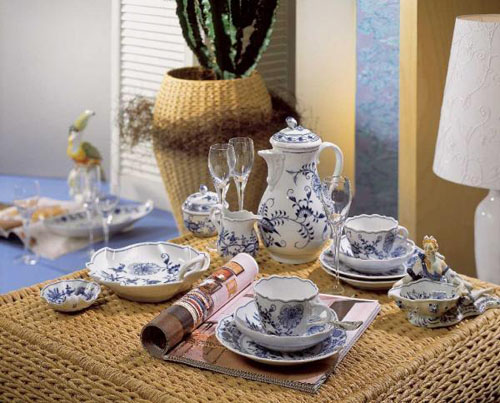


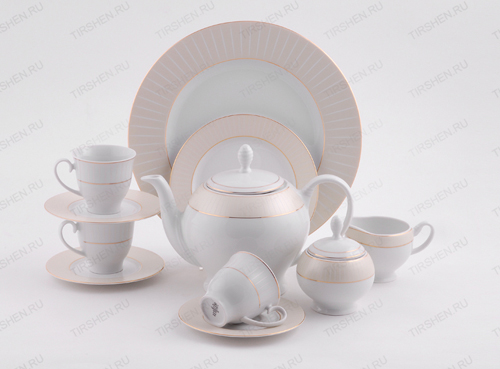
Porcelain in France
In the first half of the 18th century, manufactories in Rouen, Saint-Cloud, Mennessy, Chantilly, Vincennes worked in France, producing elite items from soft porcelain. Vincennes porcelain was notable for its high skill in casting porcelain flowers in the Rococo style. Real hard porcelain appeared in France only in the last third of the 18th century. Since the 1750s, French Sèvres porcelain has been a true trendsetter since 1756, and has been produced at the manufactory in Sevres.
The manufactory was under the patronage of Louis XV and his mistresses, Madame Dubarry and Madame Pompadour. One of the classic colors of Sèvres porcelain is called "Pompadour roses". Talented artists and sculptors (Francois Boucher, Claude Duplessis) were involved in work in Sevres. Biscuit sculptures occupied a special place.
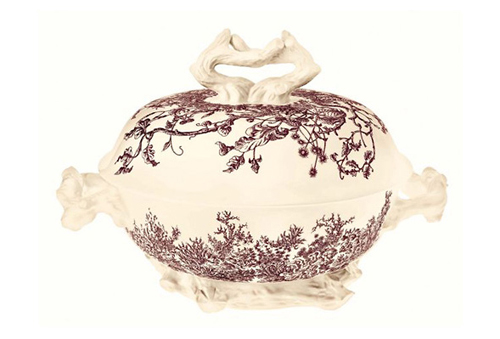
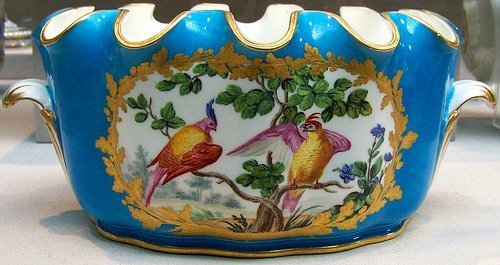
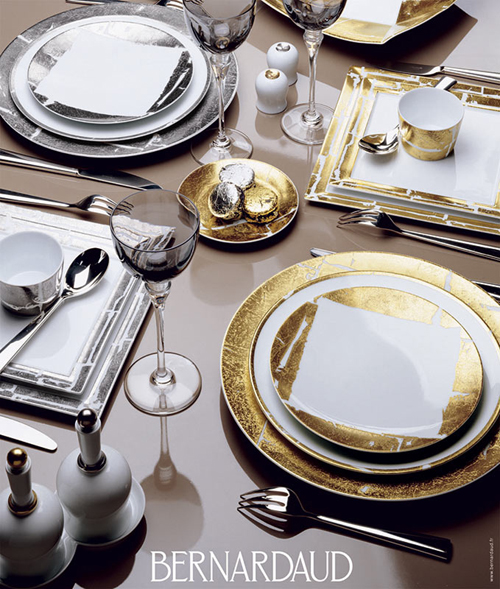
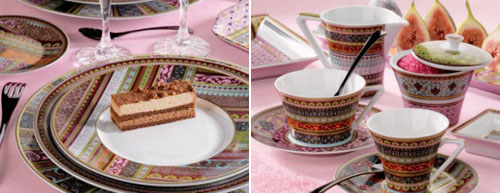
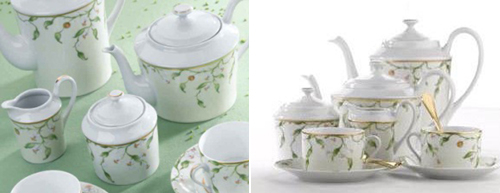
English porcelain
English porcelain of the 18th century also gained worldwide recognition. In terms of the number of ceramic factories, England at that time steadily ranked first in Europe. Unlike continental European factories, which were under the financial patronage of the august families or other noble persons, English enterprises operated on a commercial basis and, in determining their production program, took into account market conditions. Real porcelain was created in England rather later; products improved by J. Wedgwood were widespread.
Founded in 1745, the Chelsea factory produced English versions of Oriental and Rococo pieces. Chelsea porcelain is characterized by original tureens in the form of animals or vegetables, plates with floral ornaments, elegant perfume bottles, snuff boxes, pin boxes, and bonbonnieres. In 1769 Chelsea was sold and merged with the Derby factory. The Bow factory, opened in 1744, was one of the largest English ceramic factories of its time. It is also known as "New Canton" due to the production of white and blue porcelain with the addition of bone ash in the chinoiserie style. In Bow, the technique of imprinting from a printing plate onto a porcelain surface was first mastered.
Worcester Pottery, founded in 1791, was the first to produce tea and coffee sets with the addition of soapstone. Here mass production was established in the style of Meissen, Sevres and Oriental porcelain. Among other English factories founded in the 18th century, it is necessary to highlight the factories in Derby (1750-1848), which specialized in the production of both figurines and fine tableware, in Coleport, which is characterized by products decorated with inlaid flowers, in New Hall ( Staffordshire), which produced exotic oriental-style tableware, rose-family pallets decorated with wildflowers.
At the beginning of the 19th century, J. Spoud invented bone china at the plant in Stoke-on-Trent (opened in 1776), from which they began to make products in the English Empire style. Spode's closest competitor was Minton porcelain (the factory was founded in 1793), and art ceramics in the Victorian style are also known. In the 19th century, the production of porcelain was increasingly focused on the mass consumer, the artistic side receded into the background, but from the end of the 19th century, the artistic ceramics of Doulton, Spode in England, as well as Rookwood, Wright in the USA began to develop intensively. Modern products dating back to the 20th century bear a strong imprint of functionalism.
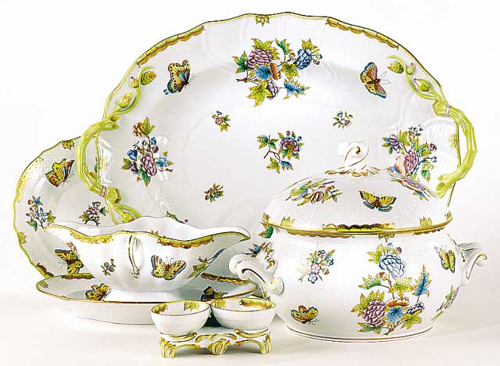
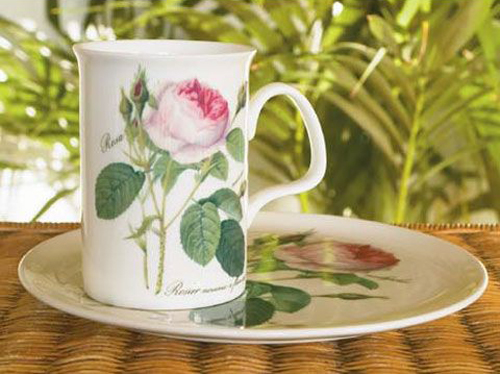
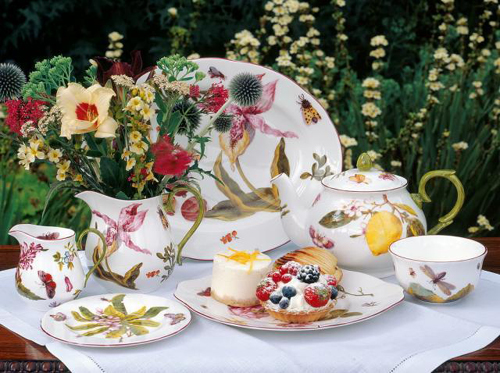
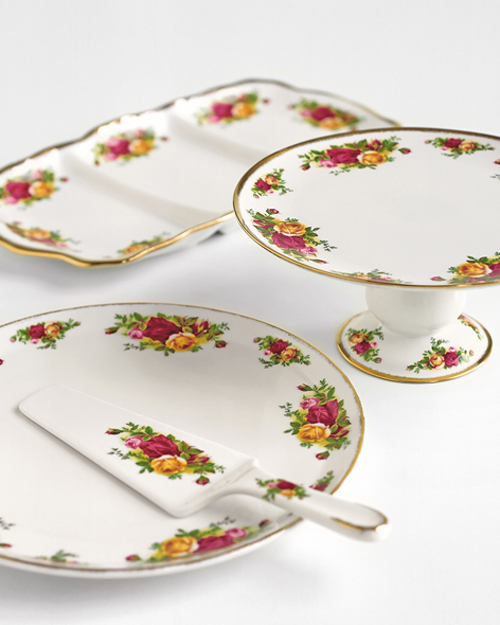
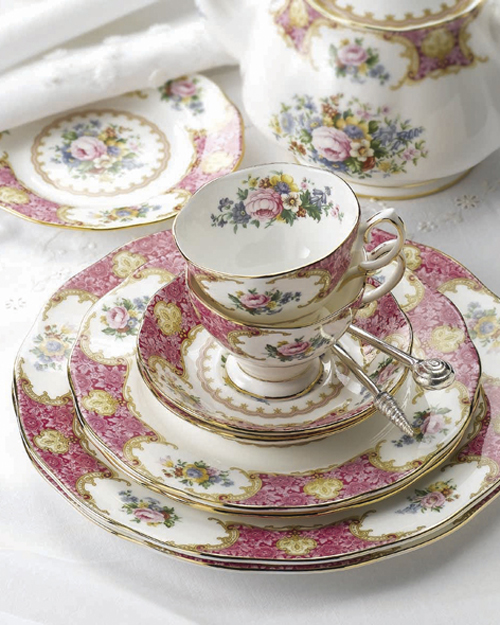
Danish porcelain
At the end of the 18th century, the later famous royal ceramic factory was founded in Copenhagen, where the subsequently spread "Danish" technique of underglaze painting, which had the property of not being erased over time, began to be used. At the Copenhagen factory, the famous service "Flora Danica" was created with an extraordinary beauty of floral ornaments.

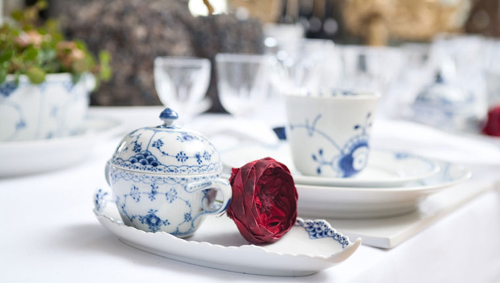
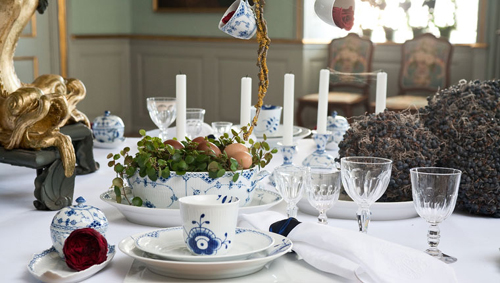

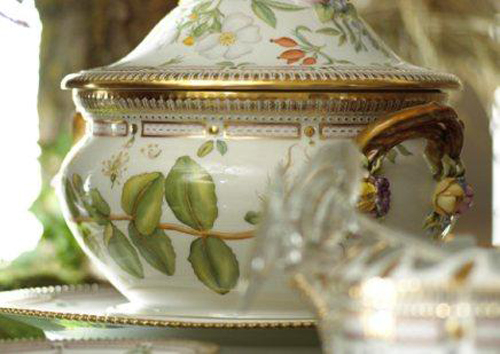
Russian porcelain
In 1744, the Porcelain Manufactory was founded in St. Petersburg, where three years later D. I. Vinogradov discovered a method for producing hard porcelain from local materials. From 1765, the Porcelain Manufactory became known as the Imperial Porcelain Factory. The company produced simple and elegant vases, sets, snuff boxes and other items. From the day it was founded, the plant worked on orders from the imperial court.
In 1766, in the village of Verbilki near Dmitrov, near Moscow, a private factory was founded by F. Ya. Gardner (now the Porcelain Verbilok factory), where magnificent "order" services were made by order of the imperial court, figurines, vases, and services that combined Empire forms with a genre interpretation of visual motifs. In the village of Gorbunovo, Moscow province, the plant of A. G. Popov produced genre figurines, which were very popular and distinguished by good taste, light folk humor. The largest entrepreneur was M. S. Kuznetsov, who bought up the Gardner factories, factories in Dulevo near Moscow (founded in 1832), Konakovo, and others. Kuznetsov porcelain is notable for its impeccable technical performance and exquisite but eclectic decor. Kuznetsov's factories also produced faience.
Contemporary porcelain
Since the end of the 20th century, the production of porcelain has become more and more massive. In all countries, mechanical methods are being introduced. The image is obtained by stamps, stencils, layering, decalcomania. In general, it is only at the Copenhagen factory that they achieve the creation of aesthetically new forms and paintings, consonant with the search for modernity. Many businesses in different countries produce products based on old designs.
In Russia after the revolution on the former Imperial porcelain factory propaganda porcelain is being created, the aesthetics of which are close to the aesthetics of the Russian avant-garde. At the same time, later the products of Russian enterprises become significantly worse: they often borrow easel forms, there is no correspondence between paintings and forms. Many products are too flashy, overloaded with gilding, and the crock has become much worse. At the same time, at a number of Soviet enterprises, products are painted by hand. Graceful small plastic continues to be produced at the Porcelain Factory. Lomonosov, old models of Kuznetsov are produced here, they continue painting with cobalt.
By the way
Some manufacturers mark their porcelain pieces on the bottom with the designation "CHINA. Made in -–". Buyers are often confused by this phrase. But connoisseurs know the answer for sure: "CHINA" is the international designation for high-quality bone china. It came from the distorted title of the Chinese emperor, who in ancient times owned a monopoly on the production of table china. Sometimes the words Fine Bone China, which means real bone china, are on the stamp of porcelain manufacturing plants. Now bone china is more popular than ever. This is also true for Royal Fine China tableware. With its pure white color, transparency and lightness, but at the same time, unsurpassed strength, bone china has firmly taken a leading place on the shelves of true connoisseurs and even collectors of porcelain. It is believed that there are no analogues to bone china in its qualities and strength all over the world.
According to British quality standards, porcelain is called Bone China if the bone content in it exceeds 35%. Bone china is characterized by milky white color, transparency and weightlessness, and has won an excellent reputation and a leading position in sales in the world market.
The inscription Fine Bone China means real bone china.
Ceramics
The word "ceramics" comes from the Greek word "keramos", and this group - a group of ceramic products, includes faience and porcelain and bone china.
Fine ceramics, in turn, is divided into:
- porous ceramics (faience, semi-porcelain, majolica)
- dense ceramics (porcelain, bone china)
Porcelain and faience differ in their composition. Faience distinguishes a large number of clay (up to 85% by weight), rather low mechanical strength, high porosity and, as a result, high absorbability up to 20%. In this regard, all faience products must be covered with glazes. As a rule, all colored mugs are earthenware mugs with special glazes. The firing temperature of faience is in the range of 1050 - 1280 degrees Celsius.
Porcelain this is the same ceramics, but it has much less clay and more other components - kaolins, quartz, feldspars (orthoclases). These components increase the "glassiness" of porcelain, increase its transparency, eliminate porosity, and impart increased mechanical strength to porcelain products. The firing temperature of porcelain is 1200-1460 degrees Celsius. As a rule, glaze is always used, but the glaze is translucent, which practically does not differ from the color of the porcelain itself.
Bone china or Bone China invented in England. The amount of calcium phosphate in the composition of the mass for bone china can reach 25-50% of the total volume. This explains the high cost of products made from Bone China or bone china. Bone china products are distinguished by exceptional whiteness, translucency and, at the same time, high fragility.
What is the difference between ceramic and porcelain
Without focusing on whether the question is correctly asked - how ceramics differ from porcelain or how faience differs from ceramics - interest is on the main thing.
How do porcelain mugs look different from faience mugs? First and foremost, both faience and porcelain belong to the same group, which is called ceramics or pottery. In order to distinguish porcelain mugs from earthenware, you can take several mugs and try to determine which of the mugs are porcelain and which are faience.
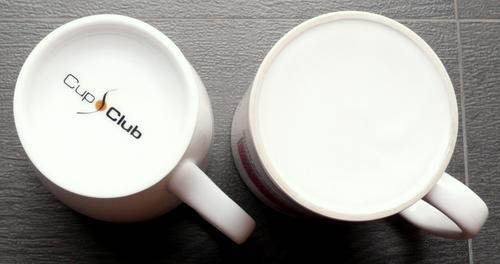
1. Turn the mug over and look at the bottom unglazed edge of the mug. If the lower unglazed edge of the mug (shard) is white, about the same as the mug itself, then it is most likely porcelain (photo on the left). In faience, as a rule, the shard is light gray, beige, or differs significantly in color from the color of the glaze of the mug itself (photo on the right).
2. Raise the mug and if it feels too heavy and its walls are thick for its size and volume, then this is most likely a faience mug.
3. Porcelain, as a rule, is translucent and thin-walled products may be partially translucent. Faience is completely opaque and is always glazed.
4. If the mug is colored, then it is usually a faience mug. There are also colored porcelain mugs, but they are usually very rare, really expensive and distinguished by thin walls and elegance.
The examples given with almost 100% certainty will allow you to answer the question "what is the difference between faience and porcelain" and always distinguish them. And you can avoid the questions "what is the difference between ceramics and porcelain" or "what is the difference between faience and ceramics". Both porcelain and earthenware are types of ceramics that differ in their composition. And all earthenware mugs, like porcelain mugs, are ceramics.
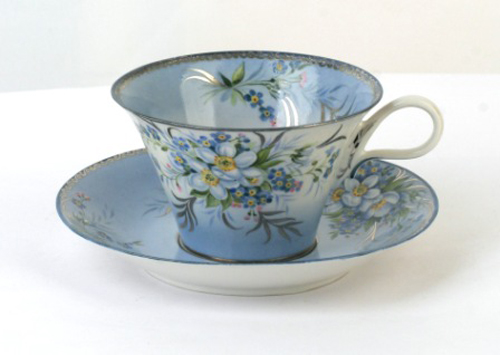

Verbilki
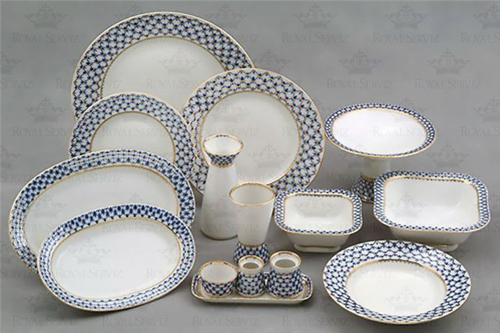

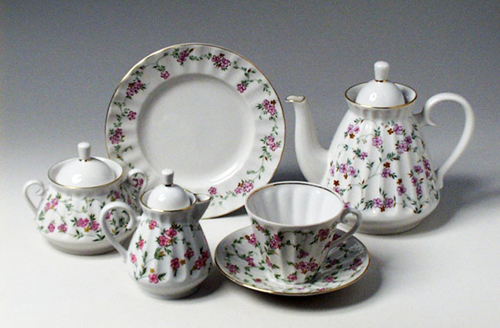
![]()

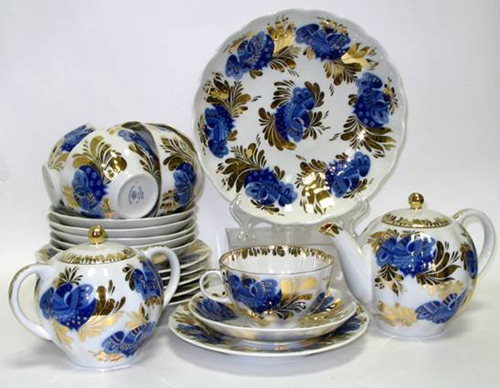



Lomonosov porcelain

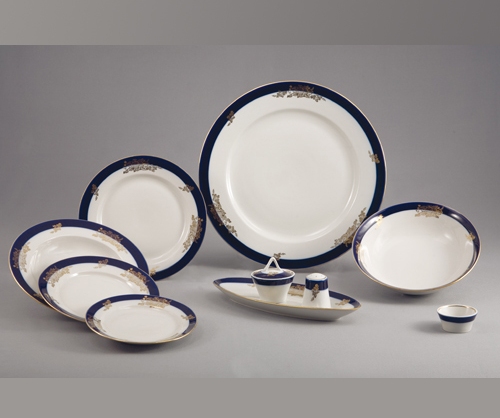

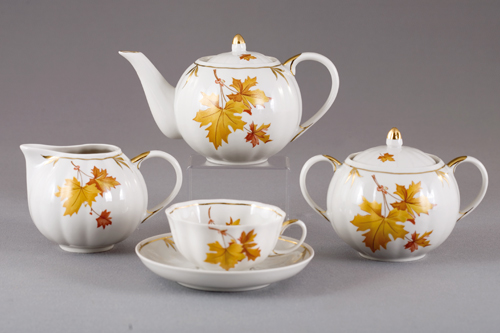
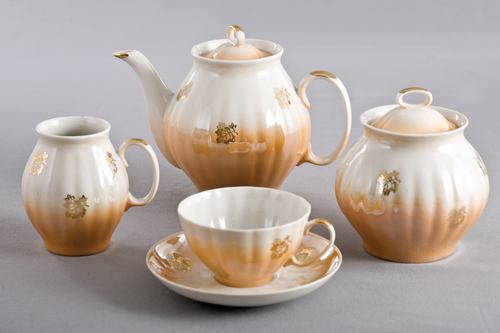
Dulevo porcelain
Porcelain
PORCELAIN-A; m.[tour. farfur from pers.]
1. Artificially prepared mineral mass from high-grade clay with various impurities, used for the manufacture of various products. Chinese f. Porcelain vase. Lomonosov porcelain service. Teeth, like f.(very white, good).
2. collected Crockery, various products from such a mass, obtained by special processing. Drink coffee from porcelain. Sideboard with porcelain. Collect old f. Porcelain collection. Biscuit f.(not glazed).
porcelain(tur. farfur, fağfur, from Persian fegfur), ceramic products (dishes, vases, figurines, architectural details, insulators, chemical equipment, etc.) obtained by sintering porcelain mass (from plastic refractory clay, kaolin, feldspar, quartz ); have a caked, waterproof, white, sonorous, translucent in a thin layer of a shard without pores. High strength, heat resistance, insulating properties. Porcelain appeared in the IV-VI centuries. in China. in Europe since the 16th century. the so-called soft porcelain (without kaolin) was produced. Hard porcelain was invented in early XVIII V. J. F. BÖttger (1682-1719) and E. W. Tschirnhausen [Tschirnhaus, Tschirnhausen, 1651-1708] in Saxony, where the production of Meissen porcelain soon arose. In Russia, the composition of the porcelain mass was developed around 1747 by D. I. Vinogradov. Distinguish between glazed porcelain and unglazed porcelain (biscuit).
PORCELAINPORCELAIN (Turkish farfur, fagfur, from Persian), ceramic products (dishes, vases, figurines, architectural details, insulators, chemical equipment, etc.) obtained by sintering porcelain mass (from plastic refractory clay, kaolin, feldspar, quartz ); have a sintered, waterproof, white, sonorous, translucent in a thin layer shard without pores. High strength, heat resistance, insulating properties. Porcelain appeared in the 4th-6th centuries. in China. in Europe since the 16th century. the so-called. soft porcelain (no kaolin). Hard porcelain was invented in the beginning. 18th century J. F. Betger (1682-1719) and E. V. Chirngauz (Chirnhausen) (1651-1708) in Saxony, where the production of Meissen porcelain soon arose. In Russia, the composition of the porcelain mass developed approx. 1747 D. I. Vinogradov. Distinguish between glazed porcelain and unglazed porcelain (biscuit). * * *
PORCELAIN (Turkish farfur, fagfur, from Persian fegfur), thin ceramic products obtained by sintering porcelain mass (from plastic refractory clay - kaolin (cm. KAOLIN), feldspar (cm. Feldspars), quartz (cm. QUARTZ)); they have a sintered, water- and gas-tight, usually white, sonorous, translucent in a thin layer shard without pores.
Porcelain is distinguished by the composition of the mass (hard, soft, bone) and by the nature of the paintings (underglaze, overglaze). Expensive collectible varieties of porcelain are called by the place of production or by the names of the owners of factories or inventors.
Chinese porcelain
Porcelain was invented in China in the 4th to 6th centuries. This discovery was facilitated by rich deposits of kaolin (Chinese clay). The surviving items are elongated vessels with a smooth polished surface, often with stucco decoration, of light colors. During the Tang era (cm. TAN (dynasty)(7th-10th centuries) and Song (cm. SUN (dynasty)(10-13 centuries), blue and pale green vases with relief ornaments were exported to the countries of Asia and Europe, which in Europe were called "celadon" (the main place of production of Longquan). These vases and jugs were shaped like antique vessels, often with dragon-shaped handles and animal-shaped necks. Then came the milky-white bei-ding vessels from Dingzhou with an extruded pattern, the blue zhu-yao wares, and the jin-yao vessels decorated with glaze from the province of Henan. Starting from the 14th century in the Ming era (cm. Ming (dynasty)(14th-17th centuries), Jingdezhen became the leading center for porcelain production, where the production of items decorated with three-color lead glazes (sancai) or underglaze blue cobalt painting, which was often combined with overglaze painting (doucai), was established. During the Ming era, porcelain figurines became popular, including figurines of famous beauties.
According to the predominance of colors in painting in Europe, Chinese porcelain began to be divided into families: pink, green, yellow, black. In these products, the refinement of forms, the purity of the surface attracted. Products from the so-called flaming porcelain with flambe glaze conquered with the colorful surface. In connection with the export of porcelain to the West, the themes of painting began to expand: subjects appeared on the items drawn from European engravings, custom-made heraldic figures.
In the 18th century, the forms of products lose their exquisite simplicity and become more pretentious. The surface often imitates varnish, expensive bronze, gold, and other materials. In the future, Chinese porcelain experienced the decline and stagnation of art forms.
Porcelain of Korea and Japan
In Korea, porcelain has been known since the 10th century. Pure white dominates, as well as with cobalt underglaze painting. The discovery of a kaolin deposit in Japan in the early 17th century led to the emergence of the first Japanese porcelain manufactory in Arita, which began to produce blue and white porcelain, decorated with celadon, as well as products with black and brown glazes. Products in the Imari style (from the name of the port through which Japanese porcelain was exported to Europe) with the finest polychrome underglaze enamel painting on a white background and in the Kakiemon style (after the creator of a new type of decor) with original overglaze painting in the form of flowers, birds, butterflies. Western European products in the kakiemon style, created according to Japanese models and in great demand, are widely known.
Porcelain in Germany
In Western Europe, in Florence, under the patronage of the Medici in the 16th century, soft porcelain was discovered with a light shard covered with lead glaze. Outwardly, it looked like Venetian milk glass and was signed with cobalt. A real revolution in the history of Western European porcelain production was the invention in 1709 by the German alchemist I. Betger (cm. BETGER Johann Friedrich) together with the physicist E. Chirnhaus of hard porcelain. Soon a porcelain manufactory was founded in Saxony, which for fifty years had no equal (see Meissen porcelain (cm. MEISSEN PORCELAIN)). Meissen porcelain owes its fame to the remarkable artist Johann Heroldt, who created skillful products in the chinoiserie style. (cm. chinoiserie) and came up with the decor of seemingly living flowers, called "German flowers", as well as the outstanding sculptor Johann Kändler (cm. KANDLER Johann Joachim), known for its fine plasticity in the Rococo style (cm. ROCOCO).
The secret of porcelain did not remain within the walls of Meissen for long. All over Europe they are working to uncover secrets. The center of porcelain production is shifting to Vienna and Venice, where porcelain factories are opened, each with its own style. In the second half of the 18th century, new ceramic factories opened in Germany in Nymphenburg, where the famous Rococo master Franz Bustelli worked, in Hoechst, also known for works in the Rococo style by Johann Melchior, in Berlin, Ludwigsburg and other cities.
Porcelain in France
In the first half of the 18th century, manufactories in Rouen, Saint-Cloud, Mennessy, Chantilly, Vincennes worked in France, producing elite items from soft porcelain. Vincennes porcelain was notable for its high skill in casting porcelain flowers in the Rococo style. Real hard porcelain appeared in France only in the last third of the 18th century. Since the 1750s, French Sevres porcelain has become a true trendsetter. (cm. SEVRES PORCELAIN), which was produced at the manufactory in Sevres from 1756.
The manufactory was under the auspices of Louis XV and his mistress, Madame Dubarry (cm. DUBARRY Marie Jeanne) and Madame Pompadour. (cm. POMPADOUR Jeanne) One of the classic colors of Sèvres porcelain is called "Pompadour roses". Talented artists and sculptors were involved in work in Sevres (Francois Boucher (cm. BOUCHER François (painter), Claude Duplessis). A special place was occupied by biscuit sculptures (cm. BISCUIT).
English porcelain
English porcelain of the 18th century also gained worldwide recognition. In terms of the number of ceramic factories, England at that time steadily ranked first in Europe. Unlike continental European factories, which were under the financial patronage of the august families or other noble persons, English enterprises operated on a commercial basis and, in determining their production program, took into account market conditions. Real porcelain was discovered in England rather late; products from various types of stone mass were common. (cm. STONE MASS), improved by J. Wedgwood (cm. WEDGWOOD Josiah).
Founded in 1745, the Chelsea factory produced English versions of Oriental and Rococo pieces. (cm. ROCOCO). Chelsea porcelain is characterized by original tureens in the form of animals or vegetables, plates with floral ornaments, elegant perfume bottles, snuff boxes, pin boxes, and bonbonnieres. In 1769 Chelsea was sold and merged with the Derby factory. The Bow factory, opened in 1744, was one of the largest English ceramic factories of its time. It is also known as "New Canton" due to the production of white and blue porcelain with the addition of bone ash in the chinoiserie style. (cm. chinoiserie). In Bow, the technique of imprinting from a printing plate onto a porcelain surface was first mastered. The enterprise existed until 1776.
Worcester Pottery, founded in 1791, was the first to produce tea and coffee sets with the addition of soapstone. Here mass production was established in the style of Meissen, Sevres and Oriental porcelain. Among other English factories founded in the 18th century, it is necessary to highlight the factories in Derby (1750-1848), which specialized in the production of both figurines and fine tableware, in Coleport, which is characterized by products decorated with inlaid flowers, in New Hall ( Staffordshire), which produced exotic oriental-style tableware, rose-family pallets decorated with wildflowers.
At the beginning of the 19th century, bone china was invented by J. Spoud at an enterprise in Stoke-on-Trent (opened in 1776). (cm. BONE CHINA) from which they began to make products in the English Empire style (cm. AMPIR). Spode's closest competitor was Minton porcelain (the factory was founded in 1793), and art ceramics in the Victorian style are also known. In the 19th century, the production of porcelain was increasingly focused on the mass consumer, the artistic side receded into the background, but from the end of the 19th century, the artistic ceramics of Doulton, Spode in England, as well as Rookwood, Wright in the USA began to develop intensively. Modern products dating back to the 20th century bear a strong imprint of functionalism.
Danish porcelain
At the end of the 18th century, the later famous royal ceramic factory was founded in Copenhagen, where the “Danish” technique of underglaze painting, which later spread, began to be used, which had the property of not being erased from time to time. At the Copenhagen factory, the famous service “Flora Danica” was created with an unusually beautiful floral ornament.
Russian porcelain
In 1744, the Porcelain Manufactory was founded in St. Petersburg, where three years later D. I. Vinogradov (cm. VINOGRADOV Dmitry Ivanovich) discovered a way to obtain hard porcelain from local materials. From 1765, the Porcelain Manufactory became known as the Imperial Porcelain Factory. (cm. IMPERIAL PORCELAIN FACTORY). The company produced simple and elegant vases, sets, snuff boxes and other items. From the day it was founded, the plant worked on orders from the imperial court.
In 1766, in the village of Verbilki near Dmitrov near Moscow, a private factory was founded by F. Ya. Gardner. (cm. GARDNER Franz Yakovlevich)(now the Porcelain Verbilok factory), where magnificent "order" services were made by order of the imperial court, figurines, vases, services, which combined empire-style forms with a genre interpretation of pictorial motifs. In the village of Gorbunovo, Moscow province, the factory of A. G. Popov produced genre figurines, which were very popular and distinguished by good taste, light folk humor. The largest entrepreneur was M. S. Kuznetsov, who bought up the Gardner factories, factories in Dulevo near Moscow (founded in 1832), Konakovo, and others. Kuznetsov porcelain is notable for its impeccable technical performance and exquisite but eclectic decor. Kuznetsov's factories also produced faience (cm. FAIENCE (ceramics)).
20th century porcelain
Since the end of the 20th century, the production of porcelain has become more and more massive. In all countries, mechanical methods are being introduced. The image is obtained by stamps, stencils, layering, decalcomania (cm. DECALCOMANIA). In general, only at the Copenhagen factory are they trying to create aesthetically new forms and paintings, consonant with the search for modernity. (cm. MODERN). Many enterprises in different countries produce products according to old developments.
In Russia, after the revolution, propaganda porcelain was created at the former Imperial Porcelain Factory, the aesthetics of which were close to those of the Russian avant-garde. At the same time, later the products of Russian enterprises become significantly worse: they often borrow easel forms, there is no correspondence between paintings and forms. Many products are too flashy, overloaded with gilding, and the crock has become much worse. At the same time, at a number of Soviet enterprises, products are painted by hand. Graceful small plastic continues to be produced at the Porcelain Factory. Lomonosov, old models of Kuznetsov are produced here, they continue painting with cobalt.
